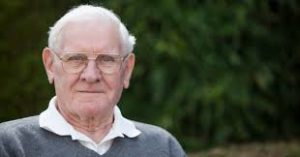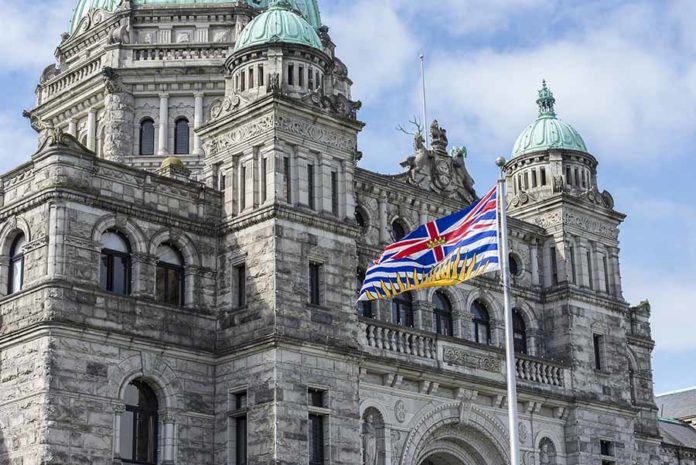(File Photo: BC Gov)

by Jim Hume
Saturday May 27, 2017
Tough times ahead for our Legislative Assembly remodelled somewhat indecisively in May. Times that will test the true mettle of those so nervously asked to govern our affairs for the next four years in a world of fear and uncertainty.
Members of the Association of Former MLAs of BC who served in the late 1970s will be aware – none more so than those who survived the election of 1979 – that the NDP came within six seats of regaining the right to govern they had lost in 1975.
Social Credit had a majority of five seats, reduced to four with the appointment of Harvey Schroeder as Speaker – but still a seemingly, comfortable and safe majority when push came to shove on a vote in the House. By today’s measure, it would look like a landslide.
But, it wasn’t. There came a day when George Mussallem, a veteran MLA from Dewdney and the government “whip” responsible for making sure in-house voting strength was solid, noted he needed only a couple of MLAs sick, one or two others out of the city on government business or attending to constituency problems for a four-seat majority to vanish.
Whether it was George’s idea or one floated down from a higher authority, he never said. But, early in the 1979 legislative session, George began to maintain what he once told me was his “whereabouts” book. He wanted to know where all MLAs were if they were not in their seats in the debating chamber. Cabinet members were not exempt. If they had business outside Victoria, they needed to give George notice to enable him to make sure key government votes would always be strong enough to resist challenge.
It was restrictive and some felt an invasion of privacy, but it was accepted as essential by the government to maintain its slim majority lifeline.
Lacking the perfect crystal ball to forecast the future, we must now wait with understandable apprehension to see how our new Legislature of 43 Liberals, 41 New Democrats and three Green Party MLAs will handle what could be a daily voting crisis once the new Legislative Assembly gathers in normal session.
Will they remember that in the excitement of the photo finish to the May 9 epic 1,356,668 registered voters opted not to vote? Much has been said and written about the result being an indicator that the voters wanted change. Little has been said about the close to 1.4 million who took the time to register but failed to vote. Could it be that they were happy with the status quo? Or maybe convinced that whoever holds power will do a bad job? Were they just too lazy? Sad, really. Such a great, genuine, balance of power not persuaded to support any party or candidate.
It is something to be considered by the Liberals who could retain the right to govern by such a slender thread; the NDP who came so close to the driver’s seat and now stand ready to take control at the first opportunity; and the three seat Greens holding the enormous power to keep the Liberals in office or send them packing – and all of us back to the polls.
The last time BC had a minority government was in 1952 when the Liberal-Conservative coalition listened to those demanding change and called an election that was held with a new electoral system. It was called the preferential ballot or the transferable vote system. I have mentioned it before but it needs repeating as the cries for electoral reform increase without too much explanation as to how they would work.
In the 1952-53 experiment voters had a list of all candidates in their riding and were required to place “1” for a first choice, “2” for a second choice and so on. The candidate with the least votes in each riding would be crossed from the list with his or her alternate votes assigned as requested to alternate choices still in the race.
On the June 12, 1952, voting day, Frank Calder of Nisga’a native fame made it on the first vote count in Atlin with 56 per cent. Ralph Chetwynd won a first count for the Social Credit League with 52 per cent in Cariboo. Social Credit newcomer W.A.C. Bennett waltzed across the finish line in Kelowna with a first count of 51 per cent and CCF leader Harold Winch swept Vancouver East with 51 on the first count.
They were the only four out of 212 candidates to break the 50+ per cent mark on the first count. Most winners needed at least three counts, a few four and two ridings – Vancouver Burrard and North Vancouver – needed five and six counts respectively before a winner was declared.
The final seat count was Social Credit – 19, CCF – 18, Liberals – 6, Conservatives – 4 and Labour – 1. The CCF topped the popular vote with 34 per cent; Social Credit won with 30 per cent; and Liberals got 25 per cent. It’s an old story in BC … the party with the most seats wins elections, not necessarily the party with the most votes.
In its few weeks of life the government of 1952 featured crackerjack exchanges between Winch and Bennett. On March 24,1953, the government engineered its own defeat on a question of financing for schools. Winch wanted to govern, but Bennett asked Lieutenant Governor Clarence Wallace to dissolve the parliament and let the people decide. Wallace agreed to the dismay of Winch.
Premier Bennett set June 9, 1953 for his re-match of the June 12, 1952 cliff hanger he had won by one seat. It was a gamble that paid off. Social Credit expanded its popular vote to 46 per cent over the CCF at 29 per cent and increased the Socred’s seats from 19 to 28 after innumerable counts and distributions of alternative votes. But, although alternative balloting had undoubtedly helped Bennett and his infant Social Credit Party win two elections over well established rivals, he never again used it during his 20-years as premier.
Whether history is about to repeat itself remains unknown, but there are lessons to be learned from experience by those who govern and those who strive to govern. Waiting to see what they have learned will be fascinating – as BC politics have always been.
Original Story HERE


